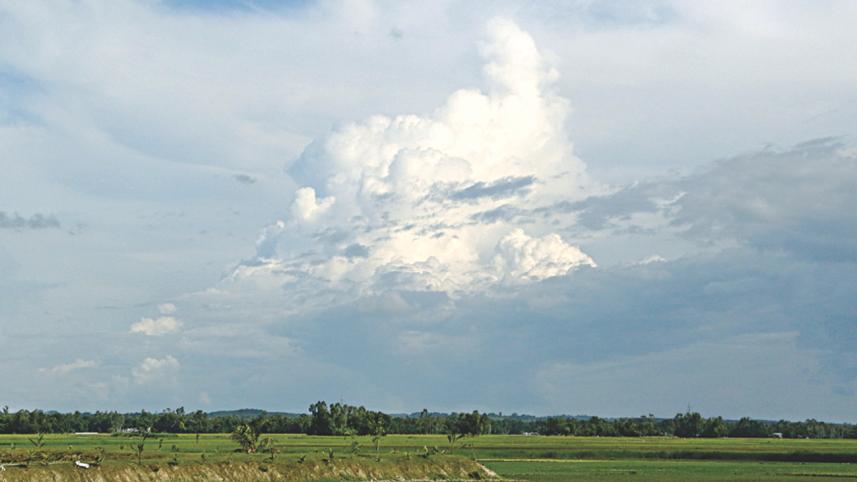Autumn Calling

Within a short time, nature around us has changed subtly but undeniably.
The most visible change is in the sky. The blue has become clearer and deeper. Set against it, autumn clouds take on infinite variations of white: puffy white, sombre white, playful white or just an unexpected, surprising white. The dark clouds, if present, are no longer ominous without the requisite thunder and lightning. The sky is the most telling symptom of imminent autumn.
The heat has become bearable. The endless, burning heat of summer days that scorched the earth and seeped through my skin into every cell of my being has mellowed into mere discomfort. Early morning - before sunrise - it is surprisingly cool, and unlike summer, when the heat started radiating before the sun rose, the heat now follows the sun. At sunset, a gentle breeze starts blowing, like a soothing balm on the face. Sometimes it carries the sweet scent of hasnahena. The air has less humidity. During my runs, I find myself sweating less profusely as I breathe deeper enjoy the scents.
Out in the paddy-fields, I watch as shade and sunlight play hide and seek, chasing each other, just as the great poet observed. The fields are carpeted in variations of green and yellow. The threat of being drenched or scorched seems a distant memory.
I see the lush trees and imagine them settling into a post-reproductive languor. They relax after a hectic few months. The frenzy of flowering and pollination of spring, followed by fruit-bearing and seeding of summer and spreading and germination of the seeds in monsoon is over for another year. They can step back and watch their children grow - another generation of seedlings successfully created. But this means that flowers are few and far between, usually growing on non-native trees. Of them the rain-tree has the prettiest, with shimmering silky threadlike petals.
Birds have lowered their profile and keep to themselves. The migrant birds are gone and we are left with the local species, many of which changed colour to prepare for breeding. They found their mates, bred and now attend to full broods, little chicks running or swimming. There is no need to show off and sing to attract a mate – until next spring, that is. Instead their effort goes into caring for their young, feeding them, protecting them from predators and above all teaching them to fly. Busy with these duties, birds are – to me, anyways - less visible than in spring and winter.
Among this subdued tone of nature, aqueous plants are an exception. Monsoon's waters have brought new life for them, filling our ponds and lakes. And so our variety of water lilies, lotuses and other water plants bloom in splendour. In particular the fields of lotus in our haors are a sight to behold. If you wait long enough you might spot a pheasant-tailed jacana flying low with its long tail trailing through the pink flowers swaying in the breeze. It is a sight you are unlikely to forget soon.
Through this I eagerly await winter because that's when the birds return in force. It is a pleasant wait however: autumn gives me much to be grateful for.
facebook.com/tangents.ikabir



 For all latest news, follow The Daily Star's Google News channel.
For all latest news, follow The Daily Star's Google News channel.
Comments